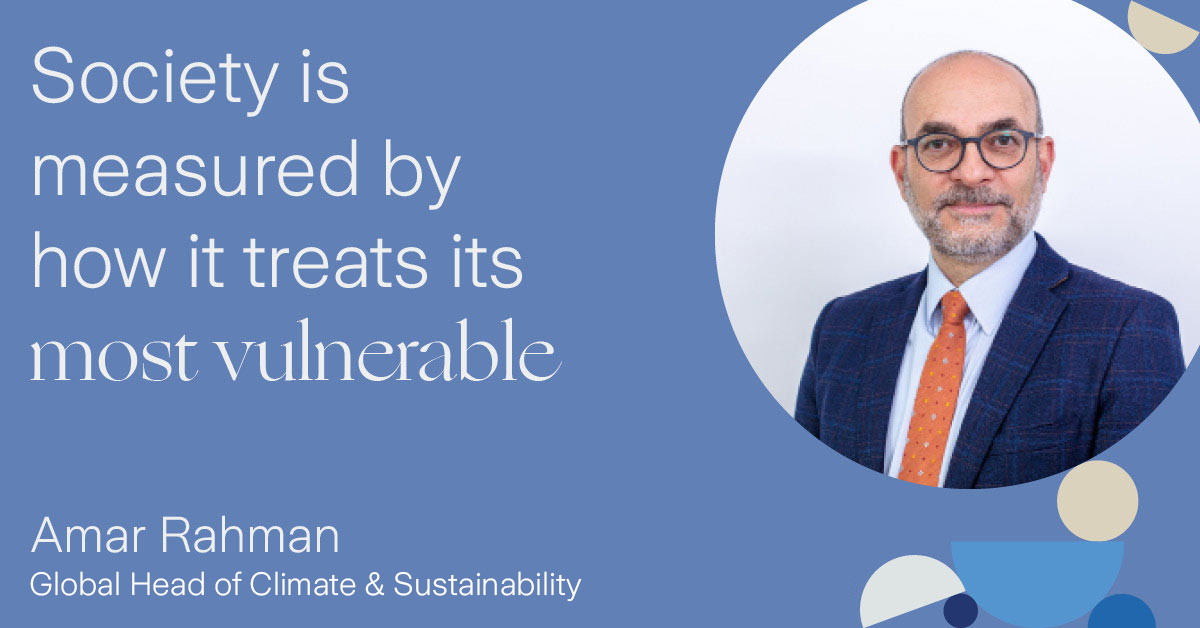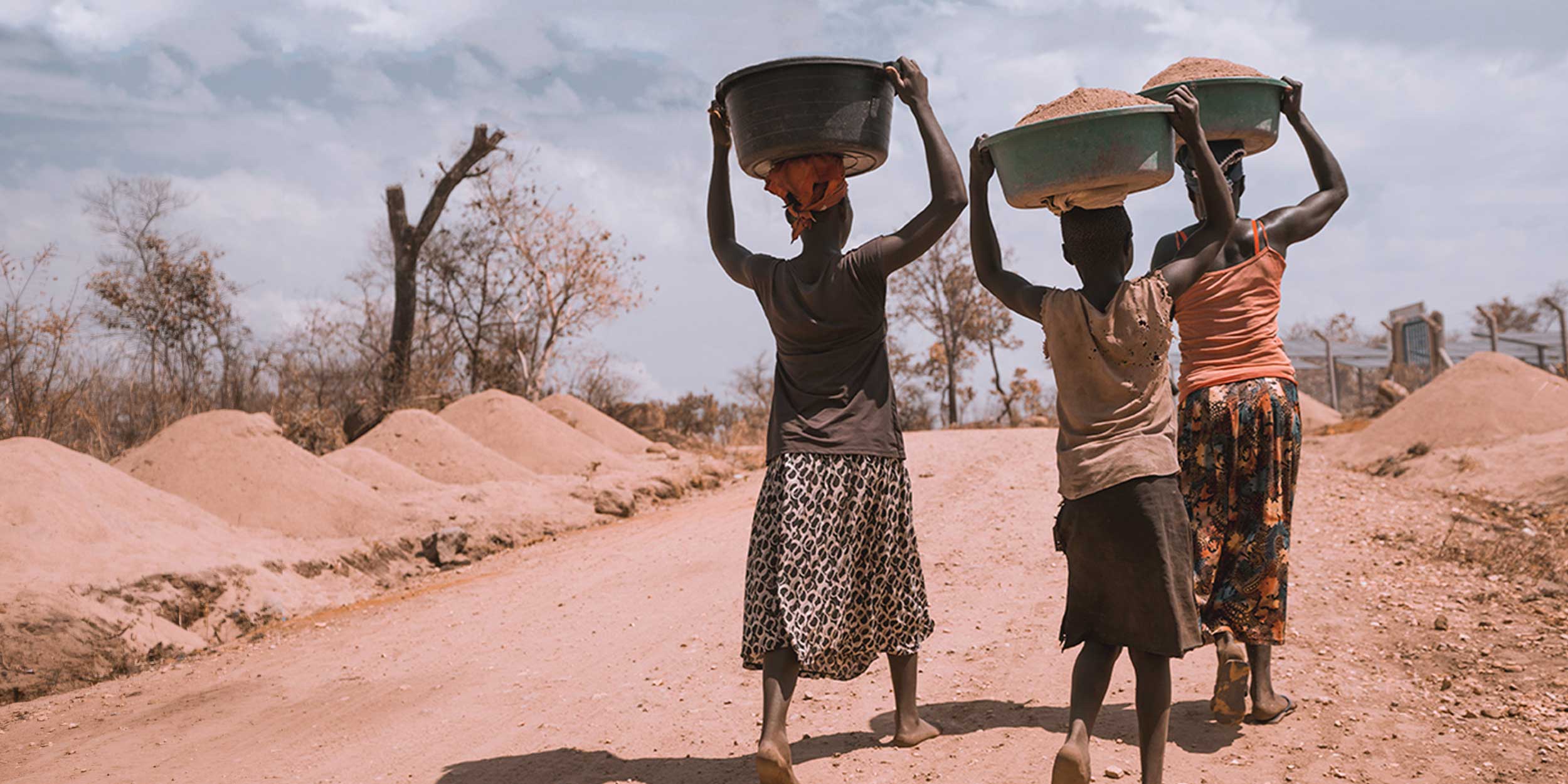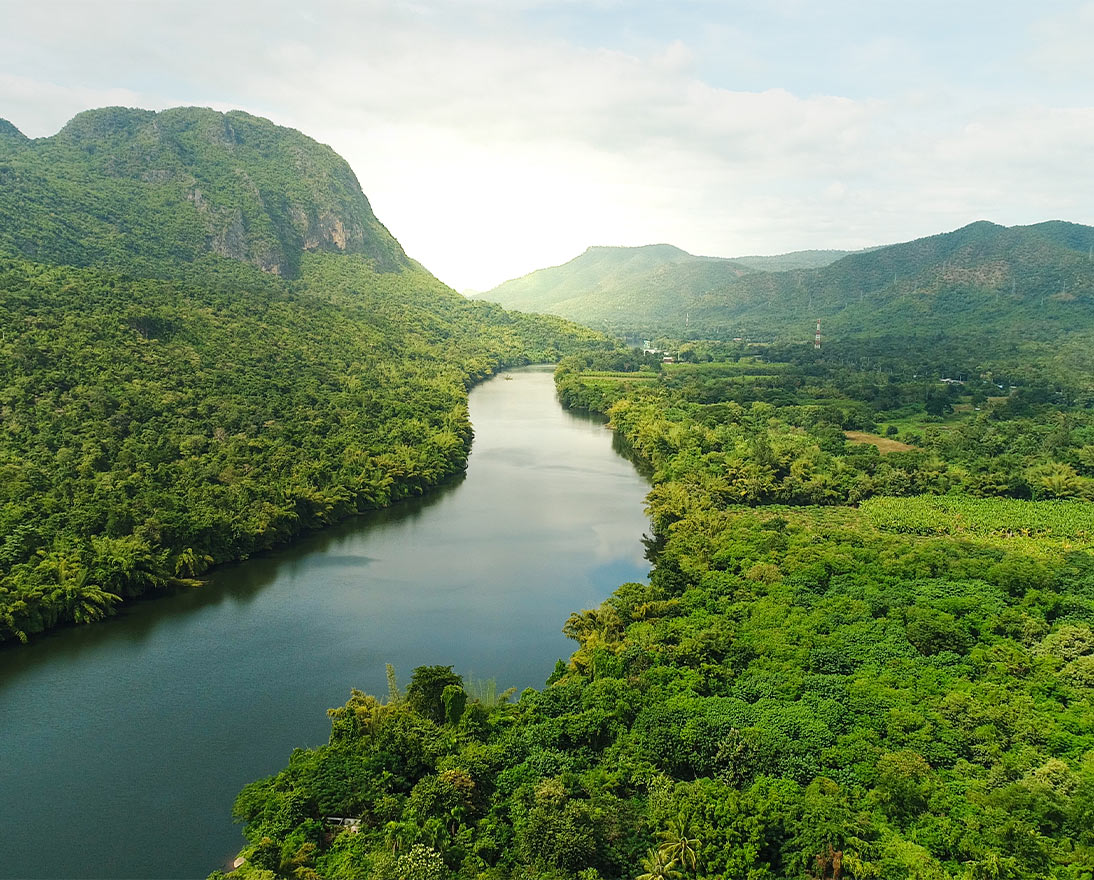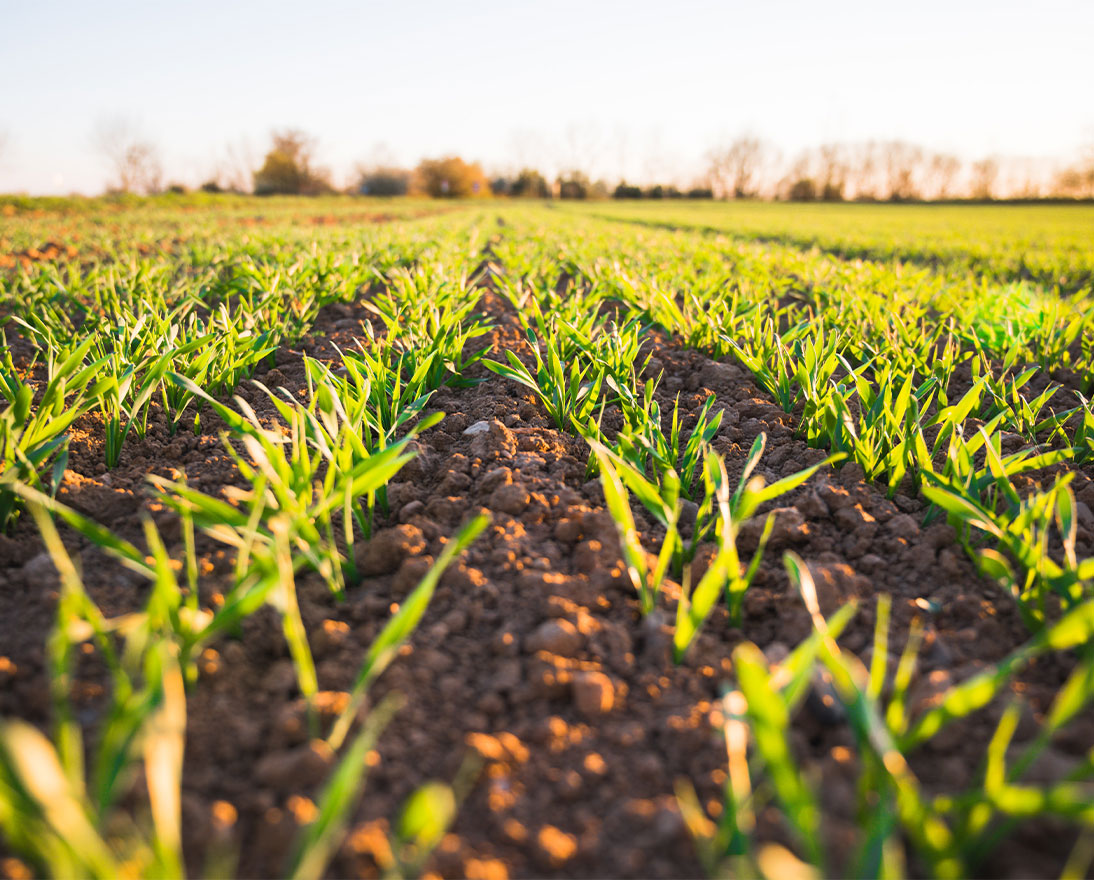There could be 1.2 billion climate refugees by 2050. Here’s what you need to know
Global risksArticleOctober 23, 2024
Extreme weather, rising temperatures and damaged ecosystems are threatening the lives of millions of climate refugees. A collective effort is needed to solve the issue of climate migration.
Climate migration is devastating people’s lives. Imagine losing your home or livelihood due to a flood. Going hungry because of a failed harvest or drought. Or being forced to flee your village due to desertification, rising sea levels or a lack of clean drinking water.
This is the reality for millions and millions of climate refugees. An annual average of 21.5 million people were forcibly displaced each year by weather-related events – such as floods, storms, wildfires and droughts – between 2008 and 2016, according to the International Displacement Monitoring Centre.
This figure reached a record 32.6 million in 2022. The IEP, an international thinktank, expects this number to surge. It predicts that 1.2 billion people could be displaced globally by 2050 due to rise in extreme weather and natural disasters.
“Extreme weather knows no borders,” says Amar Rahman, Global Head of Climate and Sustainability Solutions at Zurich Resilience Solutions, speaking at the Clinton Global Initiative during Climate Week NYC. “Collective action is needed immediately to mitigate its effects, especially on those most vulnerable.”
Who are climate refugees?
The concept was first articulated in 1985 by Essam El-Hinnawi, a UN Environment Programme (UNEP) expert. He defined climate refugees – also called environmental refugees or climate or migrants – as people who have “had to leave their habitat, temporarily or permanently, because of a potential environmental hazard or disruption in their life-supporting ecosystems.” But the extent of the definition still causes some confusion.
For instance, when two category 4 hurricanes hit Honduras, Guatemala and El Salvador in November 2020, people poured across the border into Mexico and headed towards the U.S. as torrential rains and landslides meant they lost their homes, livelihoods and access to clean water.
In this case, the cause and effect are clear. It is easy to see how unlivable conditions in their home countries caused by extreme weather led people to cross borders as climate refugees.
But Rahman believes the definition should apply to a much broader range of people. Namely, “anyone who has been impacted by disruption in their society that could somehow directly or indirectly be related to short- or long-term change in the environment.”
This means acknowledging that extreme weather and shifts in climate patterns do not just pose an immediate threat to people and infrastructure, they are also a longer-term danger that can slowly destabilize societies and economies. Take for instance sea-level rise: by 2100, up to 410 million people will be living in areas less than 2 meters above sea level and at risk from sea level rises.
The domino effect
Rahman says climate migration is often exacerbated by a string of interconnected risks that can cause a domino effect. “When temperatures rise in a country, for instance, it can reduce water availability and water quality,” explains Rahman. “This may increase the spread of disease and raise the likelihood of drought leading to crop failures that will reduce incomes and food supplies. All this can potentially lead to social disruption and political instability.”

This domino effect was felt in Syria, where the desertification of formerly fertile farming land between 2006 and 2010 meant crop yields plummeted, 800,000 people lost their income and 85 percent of the country’s livestock died. As people lost their livelihoods, food prices soared, and 1.5 million rural workers moved to the city to find jobs. Those left behind facing poverty were an easy target for recruiters from the Islamic State.
These are not the only factors that led to the Syrian civil war, with the Arab Spring and strict restrictions from the Syrian government playing a key role. But societal issues caused by a deteriorating climate worked to exacerbate existing tensions. The result was a conflict that fueled the world’s worst refugee crisis in decades with around 6.6 million Syrians (roughly a quarter of the population) forced to flee their country.
How can we help climate refugees?
One way to tackle climate migration is to create economic opportunity in societies threatened by environmental change. For example, in Bangladesh floods caused by cyclones have increased the salinity of 53 percent of farmland. This means farmers are unable to grow their normal crops, which poses a deadly threat to communities who rely on agriculture to survive.
However, farmers have been able to adapt to the new conditions with support from Dutch research project Salt Solution and local NGOs who are teaching them to grow salt-tolerant crops, including potatoes, carrots, cabbages and coriander. So far 10,000 farmers have received training, resulting in two to three extra harvests per year.
Bangladesh is also home to almost 1 million Rohingya refugees from neighboring Myanmar, many of whom live in refugee camps. To prevent these political refugees becoming climate refugees, the UNHRC is working with local partners to plant fast-growing trees in parts of refugee camps that are prone to landslides during monsoons to stabilize the ground.
This all requires investment. But at COP27 in November 2022, a breakthrough agreement was reached to provide “loss and damage” funding for vulnerable countries hit by climate disasters. This could help climate refugees internally displaced within their own country. It marks an important first step that acknowledges the people and countries least responsible for climate change are being affected first and most severely.
Protected status for climate refugees
But another issue is protected status. Most experts argue climate change refugees need access to the same protected status offered to other refugees, such as those who have escaped conflict.
In March 2018, the UN Human Rights Council found that many climate refugees do not fit the definition of “refugees” and called them “the world’s forgotten victims.” This means they cannot access legal protections to their human rights, which could protect them from threats like deportation.
To rectify this, governments and legal bodies must reframe conditions caused by climate change as a threat to human rights and recognize the deadly threat that climate refugees face – even if that threat is not always as immediate as the dangers faced by refugees fleeing war.
But the ultimate solution is to curtail climate change by achieving the goals set out in the Paris Agreement to limit temperature increase to well below 2 degrees Celsius (°C) and ideally to 1.5°C.
“Society is measured by how it treats its most vulnerable,” adds Rahman. “We need to take every measure – as policymakers, corporations and individuals – to fight climate change and protect those that are the first to be impacted by its effects.”



